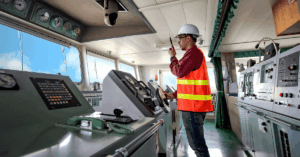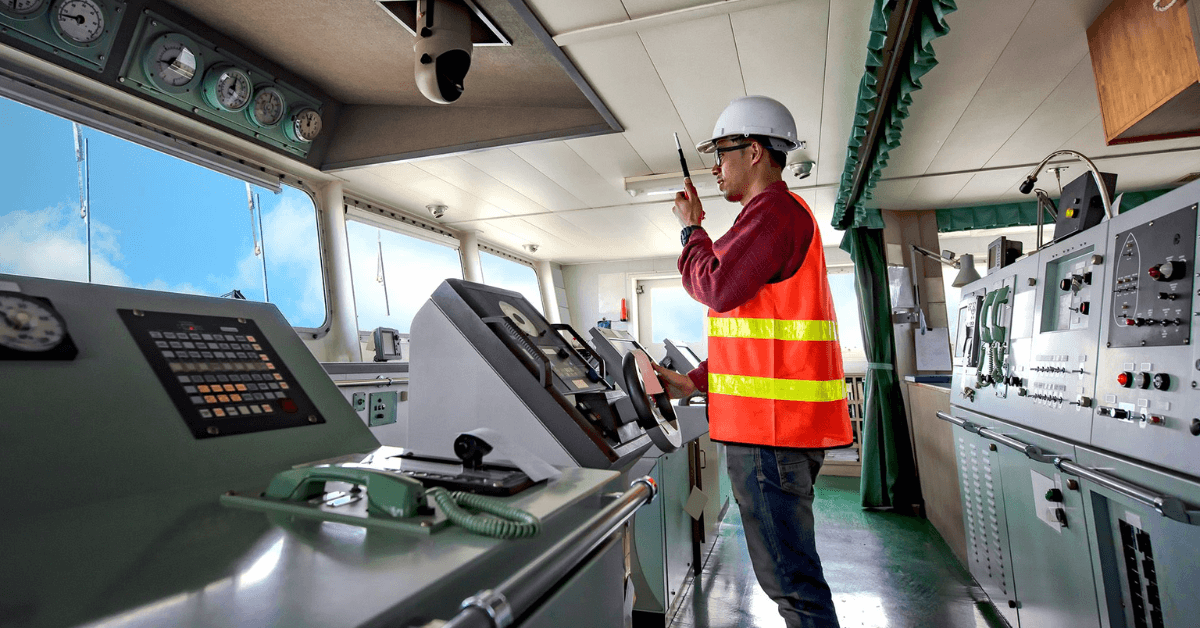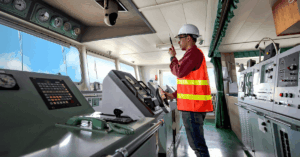
Chinese ‘Spy Ship’ Spotted Near Indian Waters Amid India-Pak Tensions
May 16, 2025
Intelligence Firm Confirms GPS Spoofing Responsible For MSC Antonia Grounding
May 16, 2025

In a world-first, Denmark has begun testing remote pilotage- an innovative maritime system where trained pilots guide ships from shore instead of boarding them.
The test program is being carried out by DanPilot in partnership with Danelec, with formal approval from the Danish Emergency Management Agency.
This groundbreaking move aims to improve pilot safety, cut ship fuel consumption, and reduce CO₂ emissions, all while maintaining high standards of navigational safety.
The system is based entirely on advanced data transmission technology. Ships involved in the test send real-time information about their speed, course, and position using Voyage Data Recorders (VDRs).
This data is collected by Danelec’s system and transmitted to DanPilot’s control center in Randers, where pilots analyse the information and remotely guide the vessel.
The solution removes the need for pilots to physically board ships, one of the most dangerous parts of their job, often requiring them to climb rope ladders from moving pilot boats.
DanPilot and Danelec have spent six years developing this technology. According to the pilotage company, the goal has always been to make the job safer for pilots while helping shipping companies reduce operational costs and lower emissions.
The CEO of DanPilot said that this could become a major paradigm shift in how pilotage is conducted.
The remote pilotage test is being carried out in two regions: the Kattegat and the western Baltic Sea. It will last for up to 18 months and will involve about 50 pilotage operations.
Only vessels that meet specific technical conditions will be part of the trial. Eligible ships must have a draft of less than 13 meters and will be selected for transits that do not require compulsory pilotage under current regulations.
During the test, pilots will remain in the Randers control centre, using Danelec’s software to provide real-time navigational advice based on the data received.
The technology aims to make the job safer, especially during harsh weather. It also helps ships maintain steady speed and course, avoiding the delays and fuel burn associated with waiting for a pilot boat.
Additionally, pilot boats used for transferring personnel won’t be needed in these specific operations, helping save fuel and logistical resources.
The technology is expected to be relevant for up to 10 per cent of DanPilot’s current operations in Danish waters. If successful, this model could be scaled up within Denmark and internationally.
The CEO of Danelec stated that cybersecurity is a crucial part of the system, making sure that remote pilotage can be implemented safely and securely at a global scale.
Several shipping companies, including Maersk, are participating in the test program by offering their vessels to operate in the designated areas. Their cooperation is helping ensure that the trial runs smoothly and collects valuable data for future regulation.
Although Vessel Traffic Services (VTS) already track ships and provide remote navigational guidance in congested waters, pilotage has always required a pilot to physically board the vessel, until now.
This is the first time in the world that a country has officially approved and launched a remote, data-driven pilotage program, where full navigational guidance is given from shore, using real-time ship data.
Reference: danelec
Source: Maritime Shipping News


